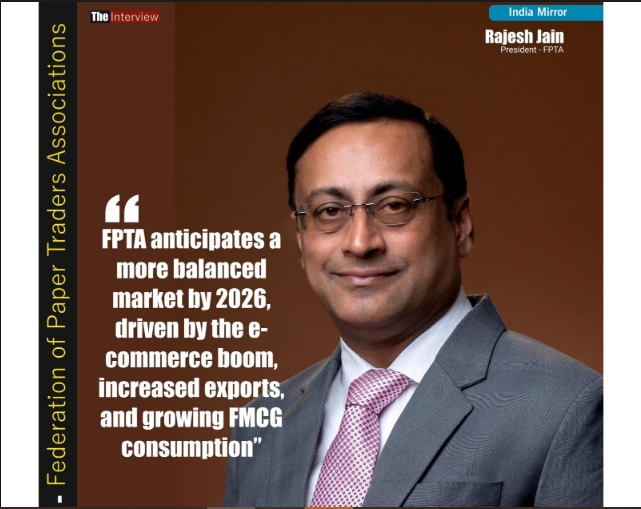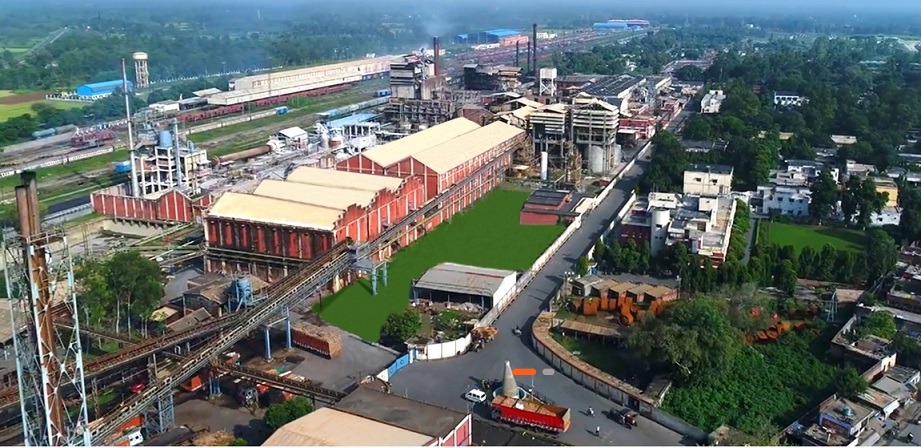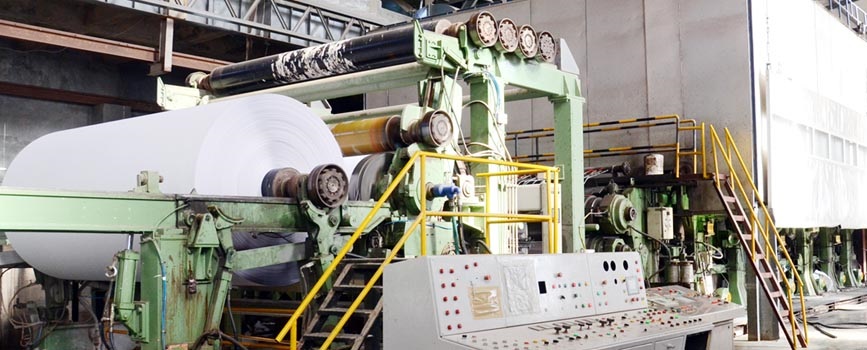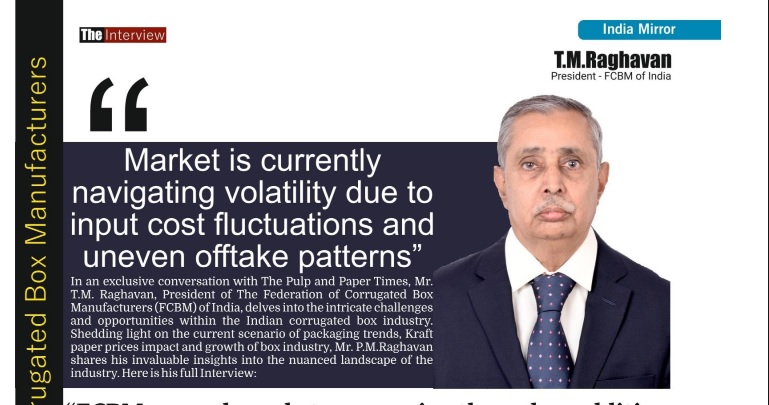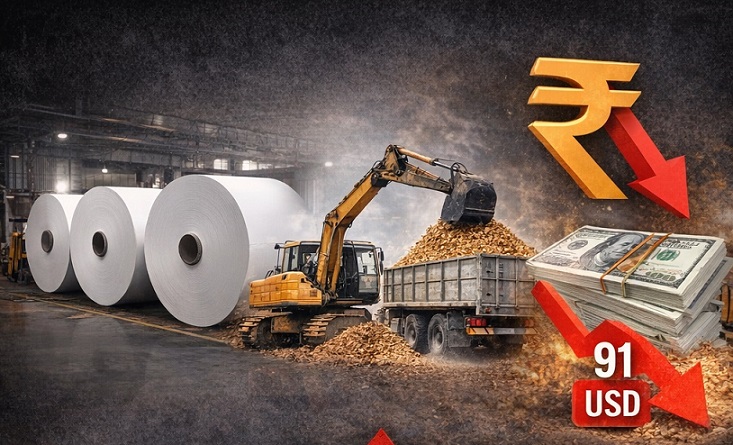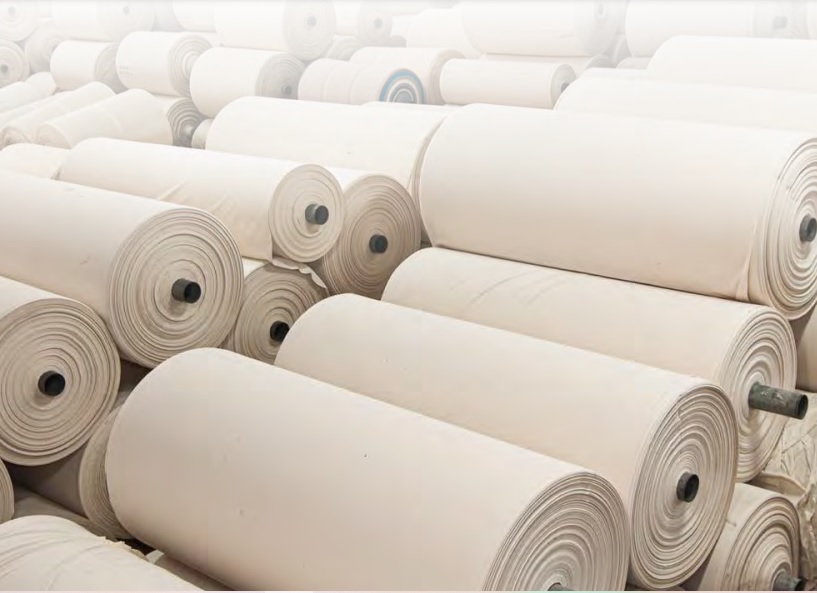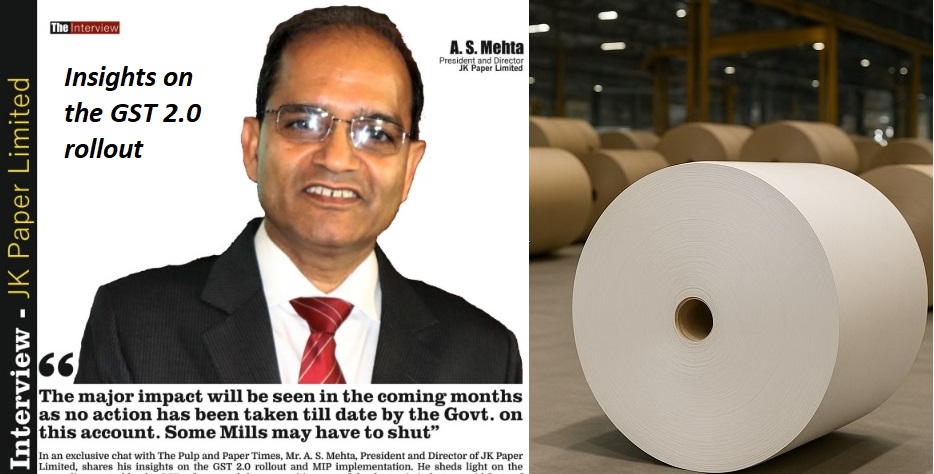JK Paper intends to widen its product mix, planning to introduce liquid packaging, cigarette board, anti-fungal, and aqueous boards
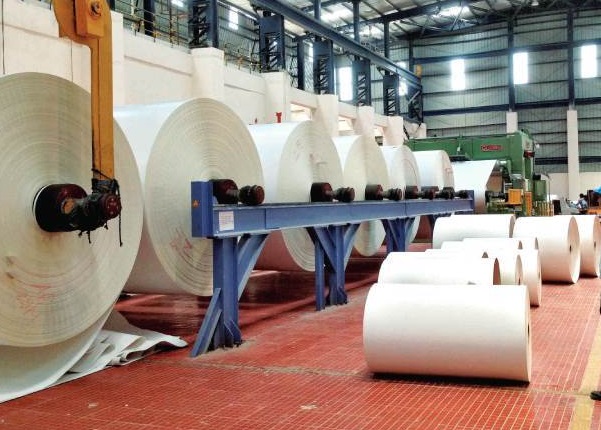

JK Paper intends to widen its product mix, planning to introduce liquid packaging, cigarette board, anti-fungal, and aqueous boards; earned INR 322 Cr profit in FY 20-21
- Demand in the Writing & Printing Segment (which accounts for about 23% of JK Paper’s revenue) JK Paper volumes dropped by around 9% and prices of various products from 10 – 15% respectively over 2019-20.
- In the Packaging Board segment, JK operated its entire capacity in the higher valued-added virgin grades. The domestic market share of JK increased to 14% for the year up from 12% during 2019-20.
New Delhi | 2nd September 2021 | The Pulp and Paper Times
JK Paper encountered one of the most challenging years in its existence in 2020-21. The year was marked by demand destruction in the first half and a sharp demand shock in the second half. JK Paper was required to protect its Balance Sheet in the first half and move with agility in the second half. JK Paper built around the capacity to remain among the most cost-competitive paper companies during challenging market cycles and among the first to be off the blocks as soon as markets recovered. The combination of resilience and responsiveness was validated during this challenging year.
“The economy improved appreciably in the second half of the year, reflected in a pick-up in demand for packaging board as the pandemic accelerated online purchases due to social distancing restrictions. The emphasis on hygiene increased the demand for tissue paper. Going forward, we expect that growth will be driven by these and specialty paper segments induced by plastic substitution as the world replaces single-use plastic with eco-friendly paper-based alternatives,†said Mr. Bharat Hari Singhania, Chairman- JK Paper Ltd. in the annual report for the financial year 20-21
Giving the overall scenario of WPP segment, Mr. Harsh Pati Singhania -Vice Chairman and Managing Director of JK Paper says, India’s printing & writing segment contracted almost 20%, following a steep decline in the publishing and school notebooks segment, which accounts for almost 65% of the W&P market. Some of the loss was offset by a 4-5% growth in the packaging board segment. Overall volumes declined almost 15% over the previous year. The demand declined in the printing & writing segment led to weaker paper prices.
“On the other hand, a lockdown in most countries resulted in a global supply chain disruption, resulting in abnormally high pulp and other commodity prices towards the end of the fiscal year under review. We offset some of this cost increase with price corrections in the last quarter of the year. The result is that our turnover, which had declined to INR 500 cr in the first quarter, increased to INR 980 crores by the fourth quarter,†Mr. Singhania stated in the report.

During these severely testing times, JK Paper achieved the best performance in the paper industry. Team JK Paper demonstrated its passion to outperform. The Company’s focus on cost austerity, especially in raw material sourcing from plantations within 200 km of its manufacturing facilities, enabled it to reduce input costs.
JK Paper intends to capitalize on the commencement of its packaging board plant 1,70,000 TPA at the CPM unit from the second half of the current financial year.
The report stated further that, besides, the Company intends to widen its product mix following the introduction of products like liquid packaging, cigarette board, anti-fungal board, and aqueous boards. From a long-term outlook, the Company is optimistic of India’s per capita paper consumption potential, presently much lower than the global average consumption average and where even a moderate improvement in consumption could translate into a substantial increase in national appetite.
In the year under review, the Company produced new products, namely JK VFL, JK UFL, JK Color Kraft, JK Pac Fresh among others.
Product categories launched in 2020-21 comprised Color Kraft paper, Kraft liner paper, JK Pac fresh, JK Sublime paper (rolls) & Liquid packaging board. The Company is working on various new products under various stages of development focusing on functional grades, speciality paper & board as well as sustainable packaging.
Mr. Harsh Pati Singhania informed the shareholders that, “We moderated our finance through better working capital management and reduction in interest rates. Optimized steam and water consumption resulted in significant cost savings. Digital transformation in key manufacturing processes helped reduce process variations, improve quality and moderate costs. The Packaging Board project at Unit CPM progressed well and the Company has made a provision for virtual commissioning and is likely to commence trial production in the second quarter of the current fiscal year. This bodes well as packaging board markets are likely to grow at more than 10% per annum for the next few years.â€
“As an extension of JK Paper’s capacity to pioneer and embrace latest environment friendly technologies, the new pulp mill will not only be efficient, but also the quality of the pulp will be better. We are replacing the chlorine-based pulp mill with the Elemental Chlorine Free (ECF) process. Water-saving schemes will reduce the consumption of water, steam and power per ton of paper. Our GHG emissions are consistently declining,†he said.
Over the years, JK Paper strengthened its industry statesmanship through forward-looking investments in technologies directed to moderate the consumption of finite resources, increasing operating efficiency and reinforcing margins. The Company’s Triple Bottomline Approach validates that a ‘green’ business is good business.
The Company plans to enhance the treatment capabilities of colored effluents for better reuse. It will seek to increase the utilization of treated effluents for irrigation.

JK Paper’s Manufacturing excellence in 2020-21
Overview
The business of paper manufacturing is marked by capital-intensive investment. This makes it imperative for the manufacturing facility to be consistently operated at a high utilization, generating superior operating efficiencies while protecting quality, environmental and other operating standards.
Over the years, JKPL established respect for its capacity to deliver high output, consistency in the production of a range of quality products, moderated costs and high process efficiency, the basis of its any market competitiveness. The Company’s manufacturing competence represents an industry benchmark.
As per an industry study, Odisha paper manufacturing was rated among the five most competitive machines in Asia and possibly the most competitive for its capacity. Besides, the Company’s operations are benchmarked with World Bank standards on environment norms, biodiversity, cumulative impact assessment and critical habitat standards, making the Company one of the first few in India’s paper industry to be similarly benchmarked.
Despite the pandemic impact, the Company reported an asset utilization of 102.6% (ex-Sirpur Paper Mills) during the period under review (compared with 111.1% for the previous financial year). This capacity utilization was higher than the sectorial average, making it possible for the Company to capitalize on broad based output and moderate the impact of the slowdown.
During the year under review, the Company was among the first in the sector to reach rated capacity utilization, strengthening its ability to amortize fixed costs and offer customers products on time and in full. Besides, the integrated nature of operations made it possible for the Company to capitalize on the sharp improvement in pulp and paper prices from the second half of the financial year.
Highlights, 2020-21,
JKPM, Odisha
-Received consent to operate the plant with enhanced capacity of 350,000 MT of Paper and 250,000 MT of Pulp
-Installed duo shakers in Paper machines 4 & 5 to improve quality parameters.
-Installed a new automated winder for Paper machine 5 to reduce converting losses and improve the quality of wound rolls.
CPM, Gujarat
-Installed a multi-plate settler in the paperboard plant, which resulted in the reuse of treated water leading to a reduction in freshwater consumption along with fibre recovery.
-Installed three new refiners (two for hardwood pulp and one for softwood pulp) to support increased draw requirements along with consistency in strength properties.
-Increased refiner tackle life up to 1200 hours as against 700 hours earlier.
Sirpur Paper
-Commenced farm forestry plantation promotion activities in its mill catchment areas through advanced clonal technology.
-Installed a new power plant (130TPH AFBC boiler and 20 MW turbine), which helped achieve 100% power generation through captive sources and improve equipment reliability
Sales:
-Sold 3,40,976 MT of Uncoated W&P and Speciality paper (including exports) in FY20-21
- Sold 96,878 MT of packaging boards (including exports) in FY20-21.
-Sold 60,580 MT of coated paper (including Outsourcing sales) in FY20-21.
-Exported 59,041 MT of copier and office paper in FY20-21.
- Exported 7,537 MT of packaging board in FY20-21.
Highlights, 2020-21 for Wood procurement and strengthened competitiveness at JK Paper:
-The Company increased the procurement of wood from farmers from 93.7 % of its total procurement to 99.8 % in the last five years.
- The Company’s social forestry scheme benefited more than 65,000 farmers; the Company planted across 32,700 acres in 2020-21 (cumulatively more than 4.65 Lac acres).
-The Company increased clonal production and clonal plantation, gradually reducing seedling-based plantation from 55% to less than 26% in six years.
-The Company’s units were certified for FSC® COC/CW and FSC®FM

Marketing in a challenging year:
- JK Paper increased its market share from 8.5% to 12.5% for Maplitho and VAP during the year under review, a validation of its commitment to enhance output and leverage its distribution channels; the Company increased its share of the packaging board segment from 10% to 13%.
- JK widened its distribution network following the addition of 57 trade partners, taking the total to 357 trade partners (retailers, wholesalers, and direct parties) and over 4000 dealers across India.
- JK leveraged its extensive distribution network to service the growing demand for packaging board; even though the packaging board plant operated at more than 100% capacity utilization, the Company successfully reduced its inventory down to 3.5 days of finished production, one of the lowest in years.
The impact of the second wave of COVID-19 on the JK’s business appears less intense than the first. The outlook appears hazy and disruptions in the coming months are not ruled out. However, superior export performance and certain end-use segments in the packaging board business augurs well for the Company and prospects for expansion. If education institutions restart, there could be a significant positive impact on the writing & printing segment.
JK Paper reinforced its funding lines with two loans, marked by a repayment tenure of more than 98 months. Besides, the Company possessed 35% undrawn working capital as on 31 March 2021. The Company intends to moderate debt (mobilized to fund the new packaging board unit). The Company intends to ramp up manufacturing capacity at the expanded unit and generate accruals with the objective to moderate its net debt-EBITDA ratio from 2.52 to less than 1.0 in next 3 years.
Outlook, 2021-22
JKPM, Odisha
-The Company plans to install new automated refiners and centri-cleaners in Paper Machine 1
-The Company plans to undertake a digital transformation journey in key manufacturing processes to reduce process variations, improving quality and cost economy
<a href="https://atstechno.in/" title="ATS Techno Pvt. Ltd." target="_blank"> <picture>
<source media="(min-width:601px)" srcset="https://thepulpandpapertimes.com/ads/ATS1.webp"> <source media="(max-width: 600px)" srcset="https://thepulpandpapertimes.com/ads/ATS1_1.webp">
<img src="https://thepulpandpapertimes.com/ads/ATS1.webp" width="100%"> </picture></a>
CPM, Gujarat
-The Company aspires to augment production capacities through the rollover of new pulping and other utilities along with the commissioning of the new board plant capacity addition.
-The Company will launch a digital transformation journey drive to enable make processes more capable to deliver better, faster and cheaper to our customers.
Sirpur Paper
-The Company plans to replicate the successful farm forestry plantation model of JKPM and CPM for sustainable generation of quality raw material resources in the Sirpur catchment areas.
- The Company plans to enhance capacity utilization to 100% in the next fiscal year.
Web Title: JK Paper intends to widen its product mix planning to introduce liquid packaging cigarette board anti fungal and aqueous boards




 Join WhatsApp Group
Join WhatsApp Group Join Telegram Channel
Join Telegram Channel Join YouTube Channel
Join YouTube Channel Join Job Channel (View | Submit Jobs)
Join Job Channel (View | Submit Jobs) Join Buy Sell Channel (Free to Submit)
Join Buy Sell Channel (Free to Submit) Paper News Headlines Channel (Free to read)
Paper News Headlines Channel (Free to read)

